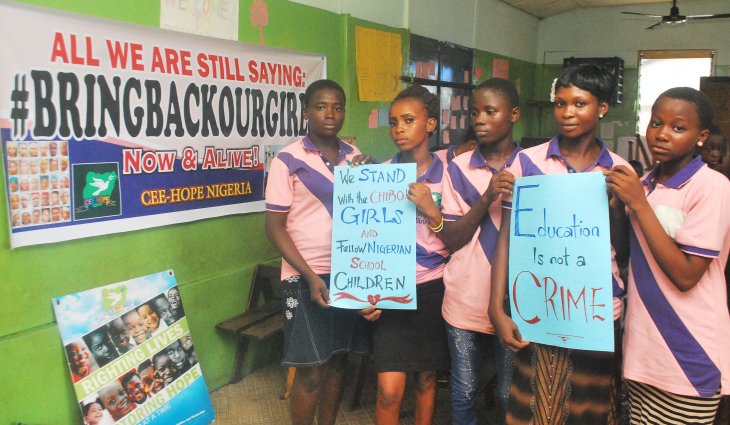On the night between 14 and 15 April, 2014, 276 girls were kidnapped by Boko Haram from their school in Chibok in Borno State in Northeastern Nigeria. The Islamist terrorist group does not believe that girls should attend school, and these girls were targeted precisely because they were in school.

An event to commemorate the first anniversary of the abduction of Chibok school girls in Northern Nigeria. Photo: Cee Hope / Wikimedia Commons
However, conservative views on gender and education is only one reason why many girls in Northern
Nigeria are missing out on education.
Due to large systematic inequalities related to religion, ethnicity and region, many girls are suffering from a triple disadvantage when it comes to educational inequality. Here, we provide an overview of the types and magnitudes of educational inequalities in Nigeria and offers some policy recommendations on how to respond to these inequalities.
Brief Points
- Nigeria is one of the countries with the sharpest educational inequalities in Africa.
- Girls receive far less education than boys.
- Northerners receive far less education than Southerners.
- Muslims receive far less education than Christians.
- The above group inequalities tend to reinforce each other.
- If anything, educational inequalities in Nigeria have been increasing over the years.
- Policy makers should strive to reduce systematic educational group inequalities.
- There is a need for better data on educational quality and performance in developing countries.
In a recent policy brief we show that educational inequalities in Nigeria are reinforced by regional,
cultural, and gender-based cleavages. In short, the North is less educated than the south, Muslims receive less education than Christians, and girls suffer from a gender-bias in favor of boys.
Hence, we need to consider all these in concert in order to capture the full picture of educational inequality in Nigeria.
It also seems that the various cleavages tend to reinforce each other. For example, the difference
in girls’ and boys’ educational level varies by region, with the Northern part of the country displaying
the sharpest gender inequalities.
Policy Recommendations
Policy makers need to take into account the complex patterns of educational inequalities when planning interventions to make sure that they target the most marginalized groups and help to reduce the most severe education gaps in Nigeria. Committing to reduce systematic educational inequalities between cultural groups can contribute to reducing the risk of armed conflict, as well as reducing gender-based inequalities.
A broad, cost-effective way of getting more girls to attend school is to enhance the quality of schools.
Previous research has shown that the quality of education and of educational facilities affects girls
more than boys. Girls are less likely to enroll in, and more likely to drop out of, poor quality schools
and schools that are lacking teachers and adequate school materials such as textbooks.
Finally, it is important to stress that in addition to understanding what affects gender- and culturally
based inequalities in education attainment, we need to better understand the causes of systematic
inequalities in terms of education quality and student performance. Such studies exist for e.g. OECD countries, but to our knowledge there is a lack of such data for developing countries at large. Hence, a final recommendation is to facilitate and prioritize the collection of data on educational quality and performance in developing countries.
- Read more in the complete Policy Brief from the PRIO Confict Trends Project
- This was published on the occassion of the 2017 PRIO Annual Peace Address with Obigaeli ‘Oby’ Ezekwesili: Education and Peace